Abstract
1. The rate of appearance in uterine venous blood of radioactively labelled, polar, non-electrolytes has been measured following their injection into the foetal circulation in the chronically catheterized sheep near term. Uterine blood flow was measured by an antipyrine technique. 2. Estimates of a placental permeability constant not corrected for area were 61-2 +/- 5-5 ml. min-1 (mean +/- S.E. of mean) for [14C] urea, 1-85 +/- 0-16 for [14C]erythritol and 0-21 +/- 0-03 for [3H]mannitol. Results are also presented for [14C]ethylene glycol, [14C]L-glucose, [14C]mannitol, [51Cr] EDTA and [3H] and [14C]sucrose. 3. In four sheep, permeability measurements for several solutes were made and the results were analysed in terms of restricted diffusion via cylindrical, water-filled pores. Calculation of pore radius was made by a minimum variance method and values ranging from 0-43 to 0-45 nm were obtained. 4. Stability and absence of protein binding of probe molecules was investigated by gel permeation on Sephadex columns.
Full text
PDF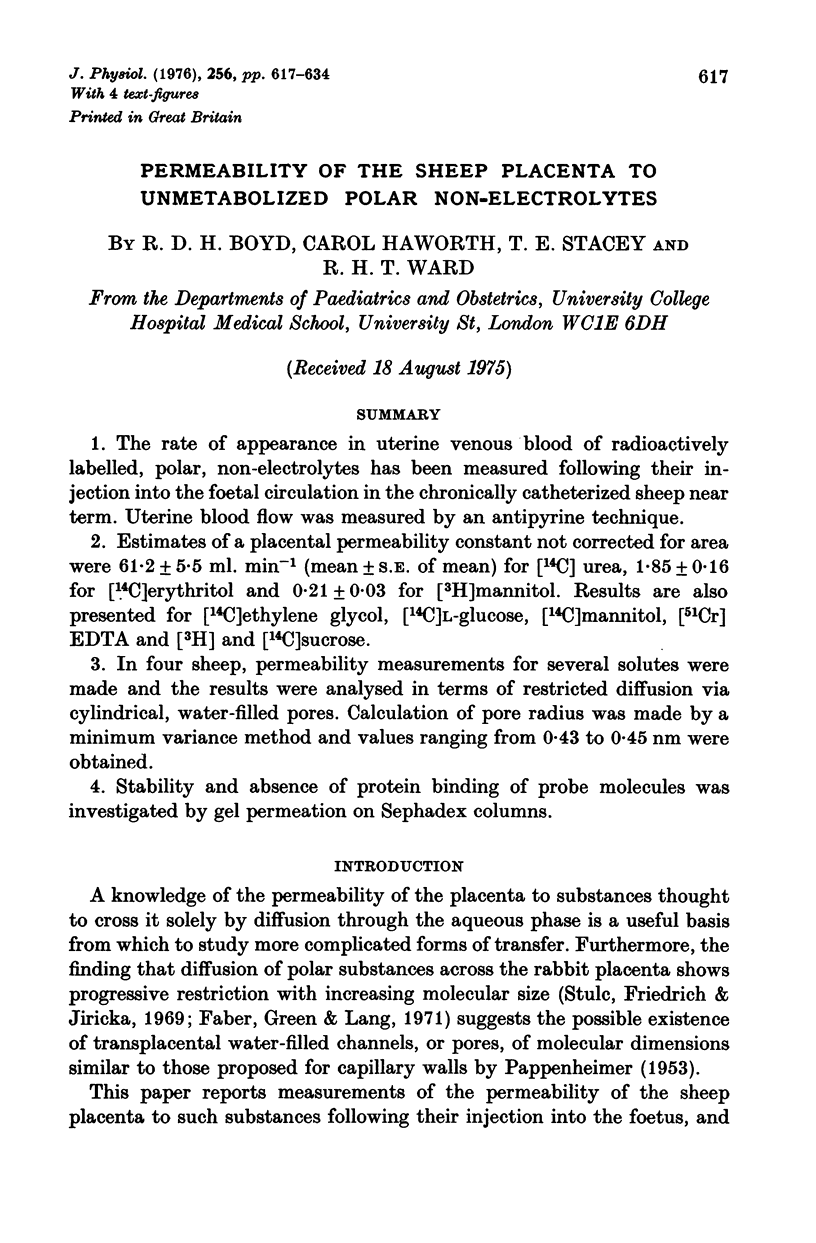

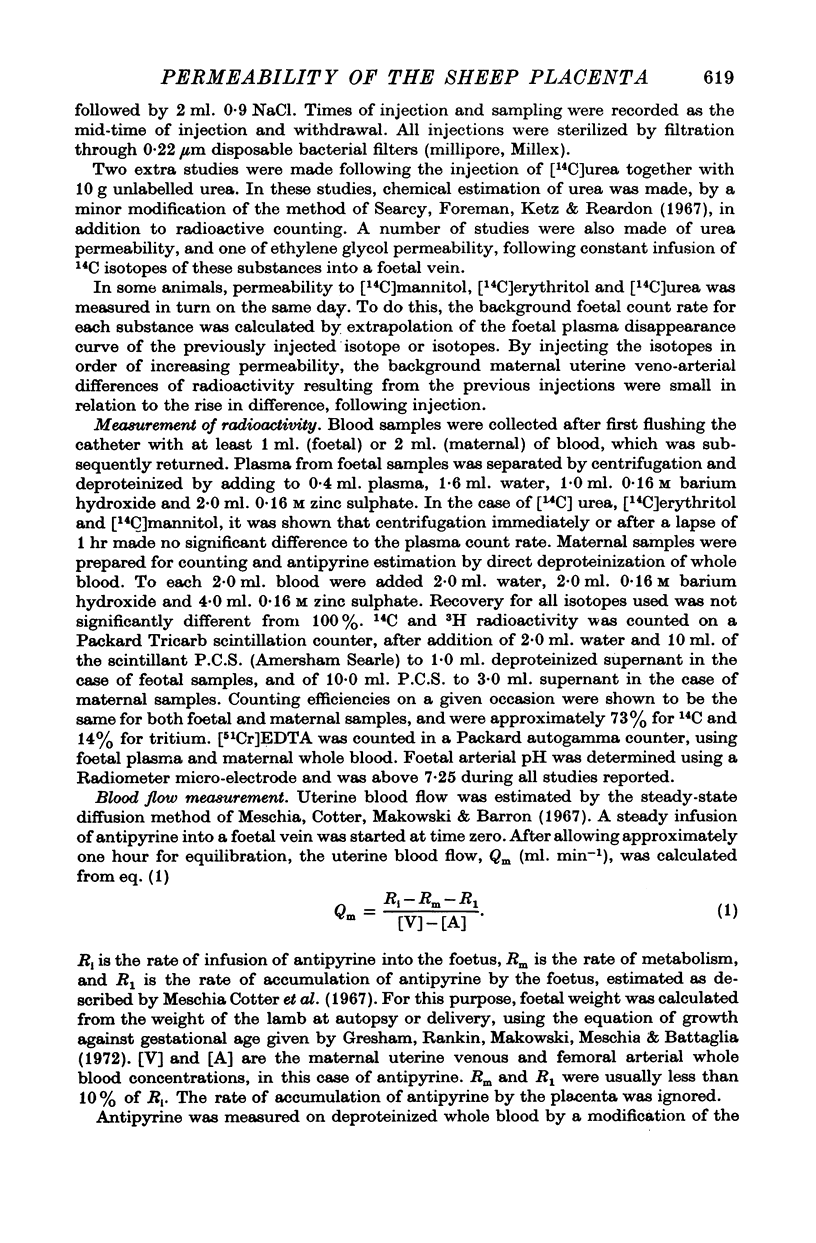
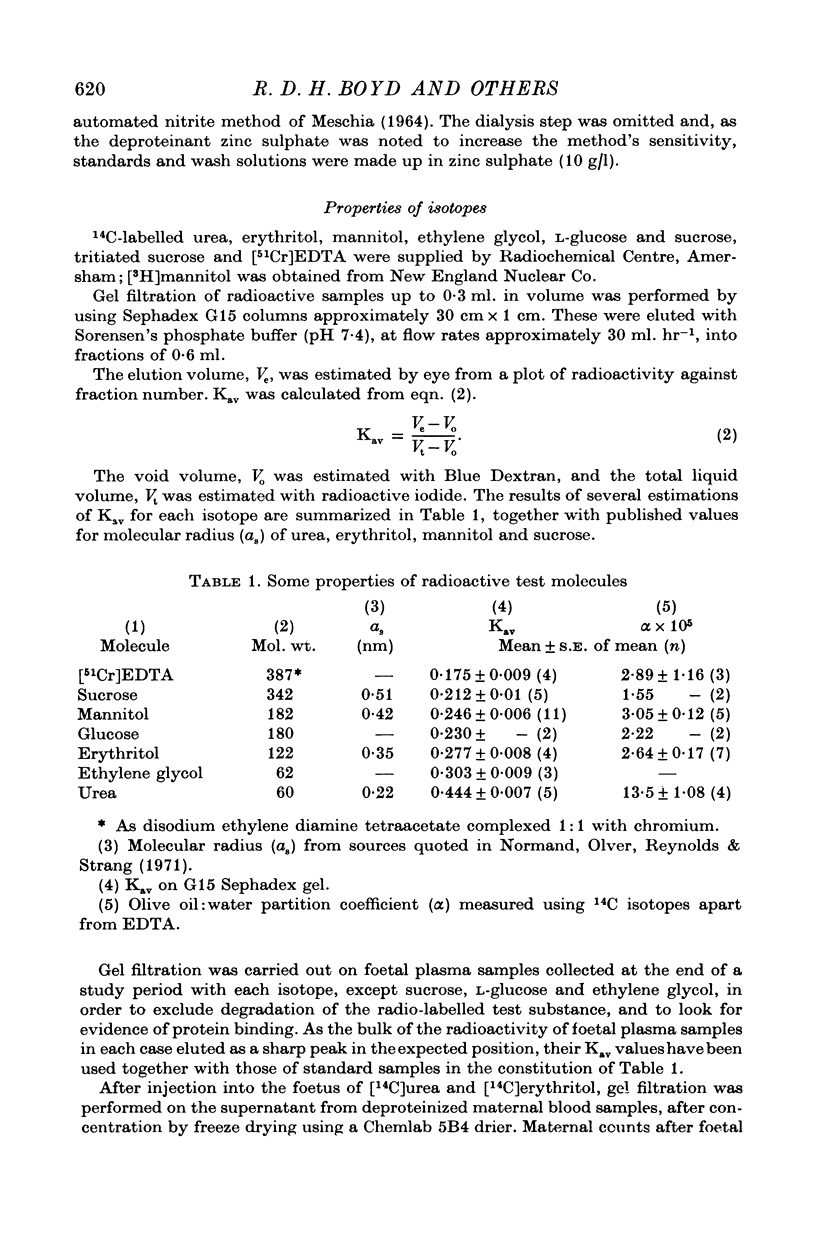
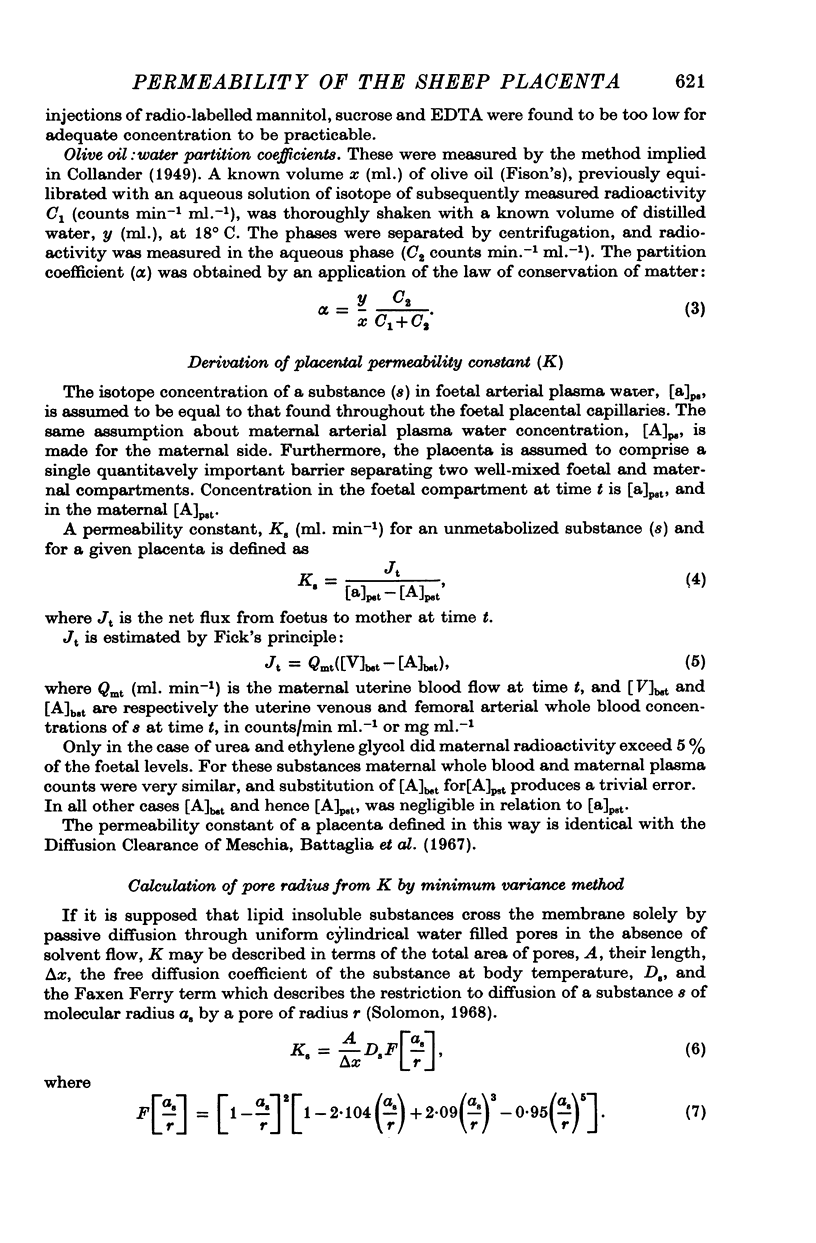
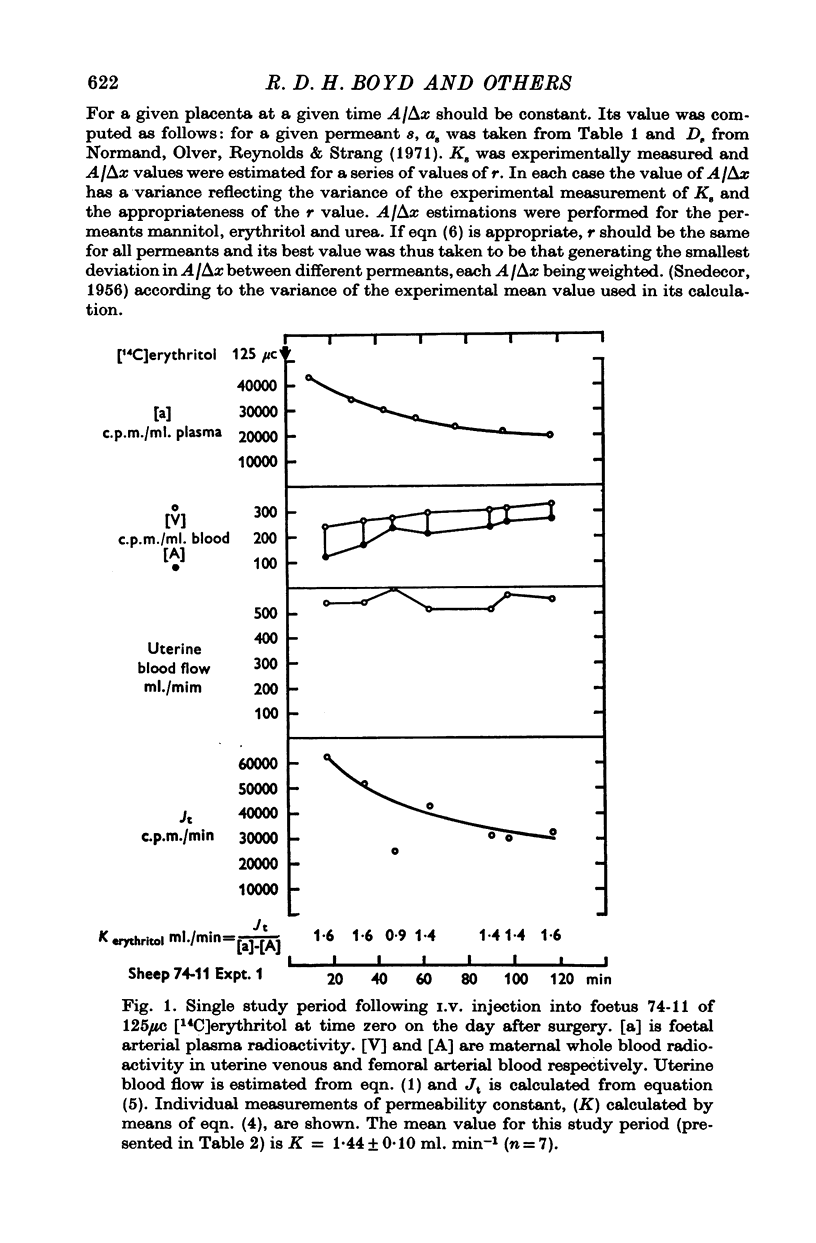
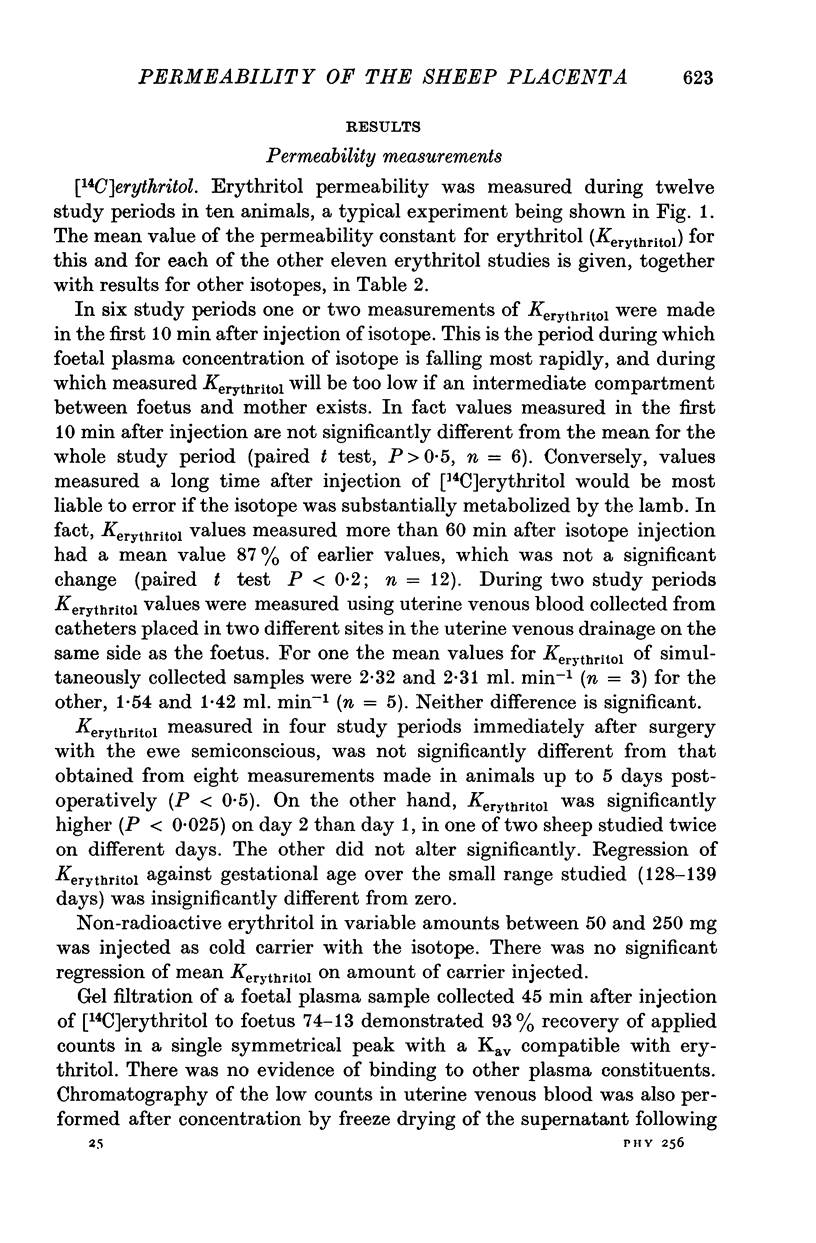
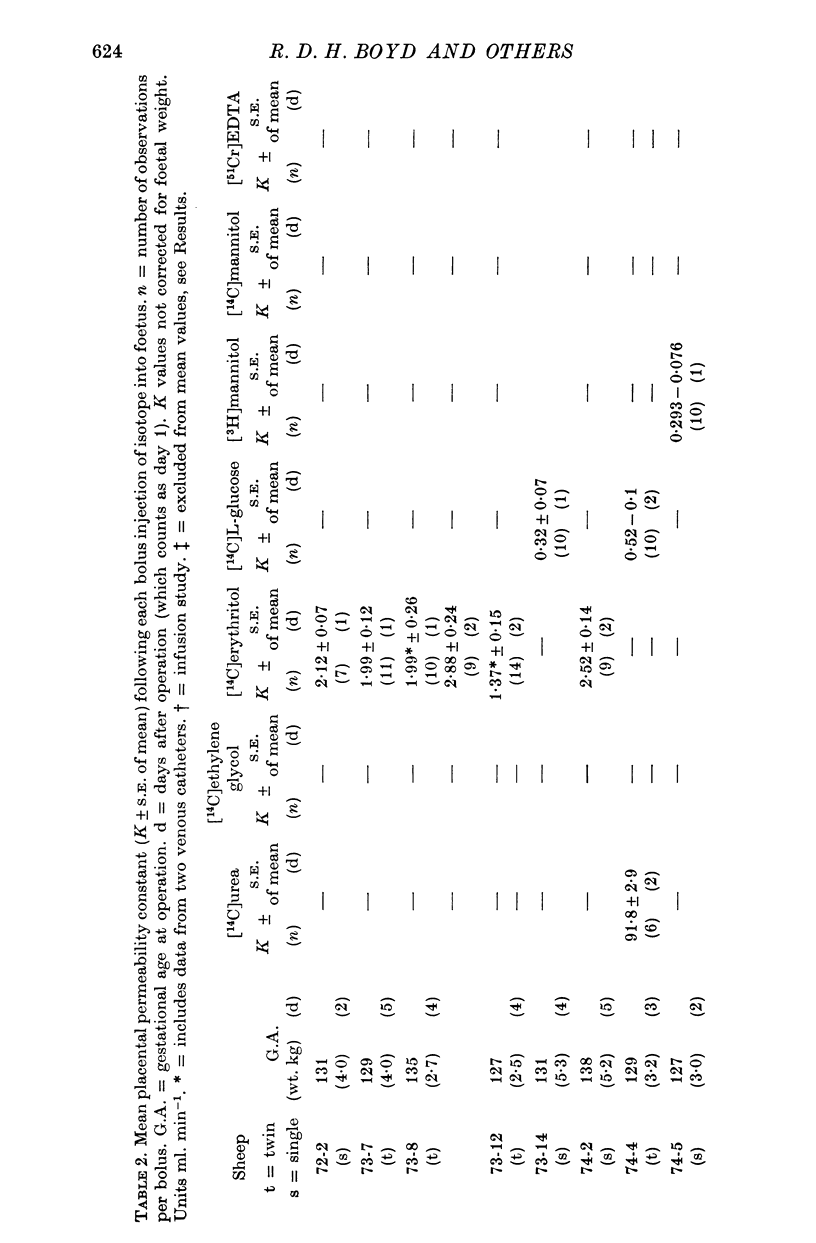
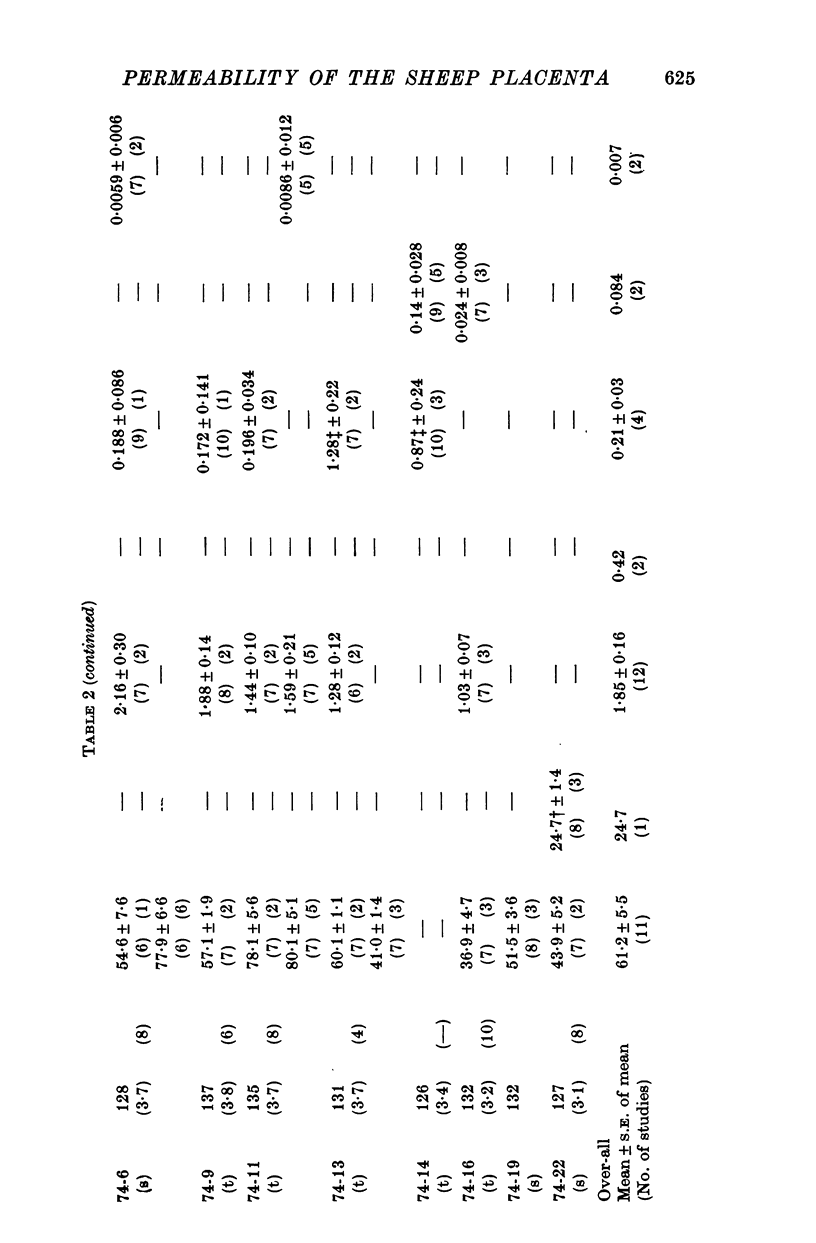

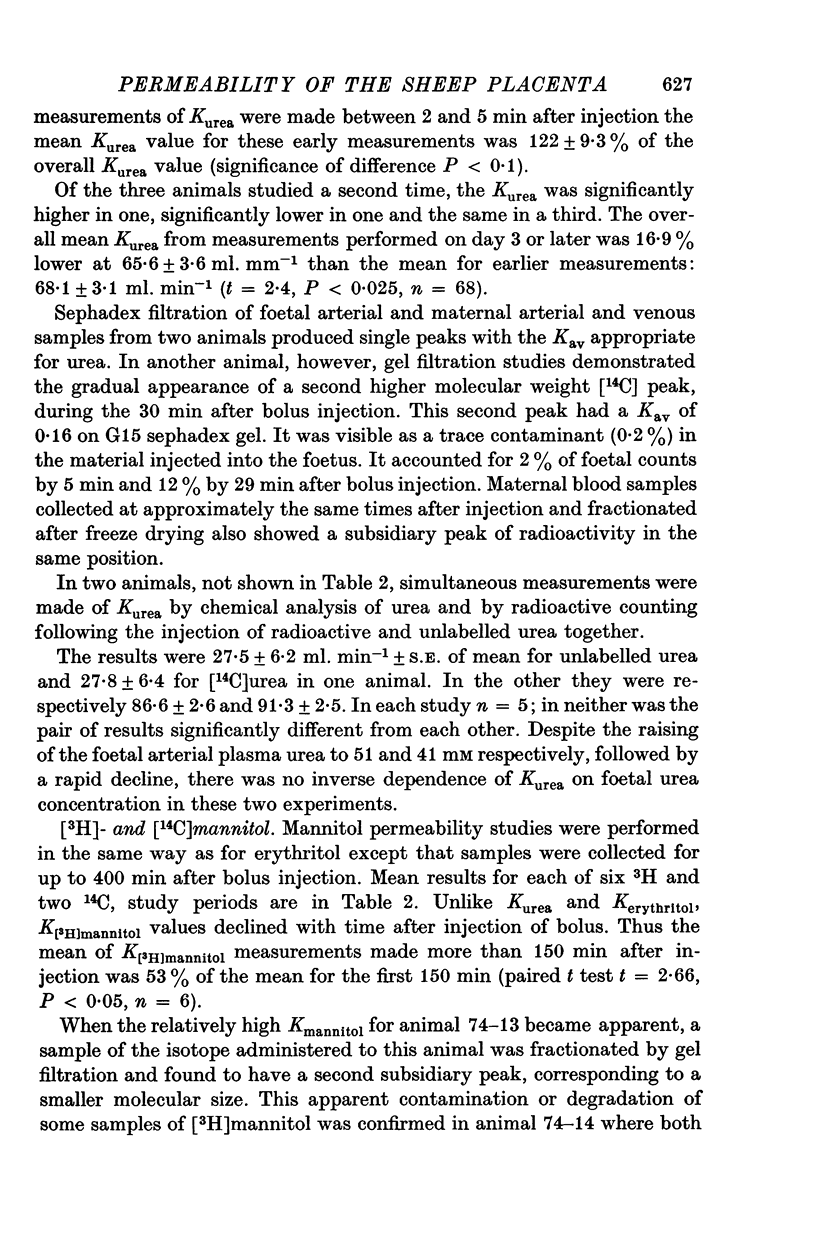
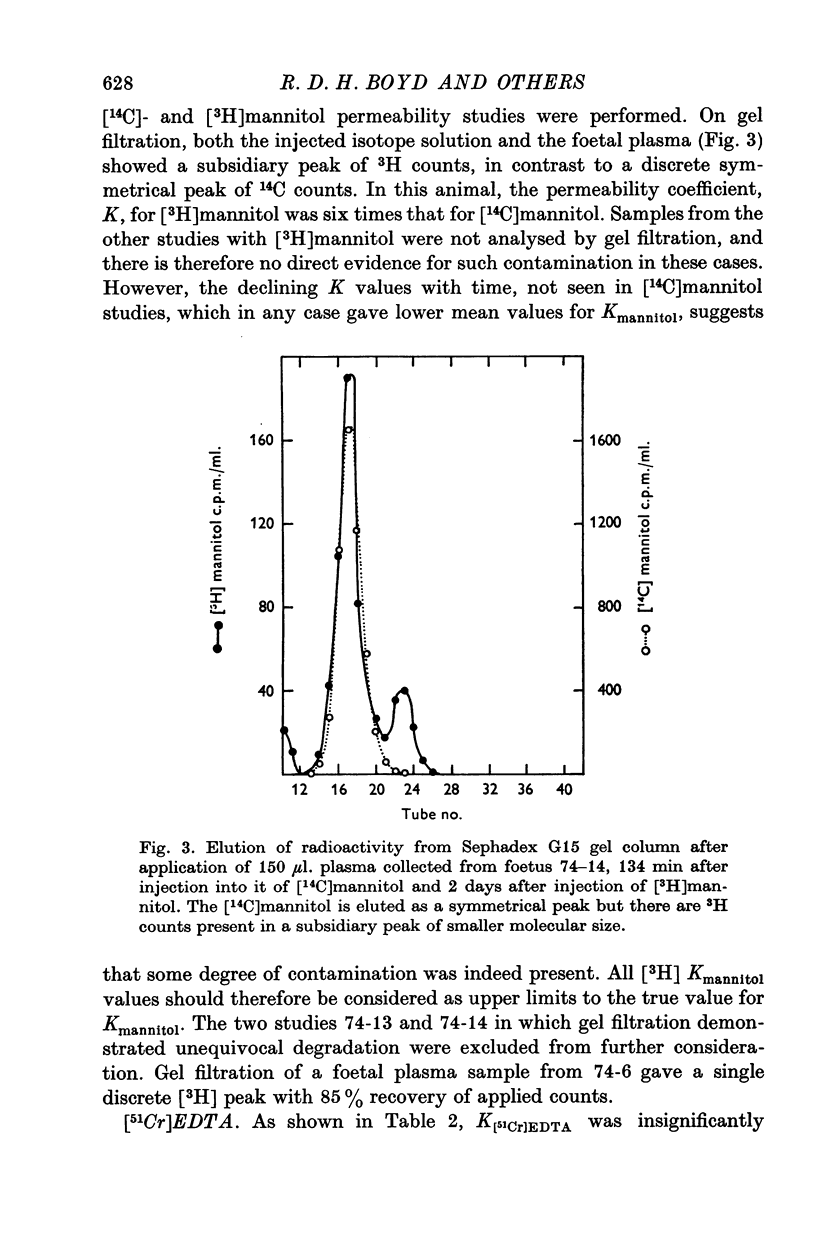
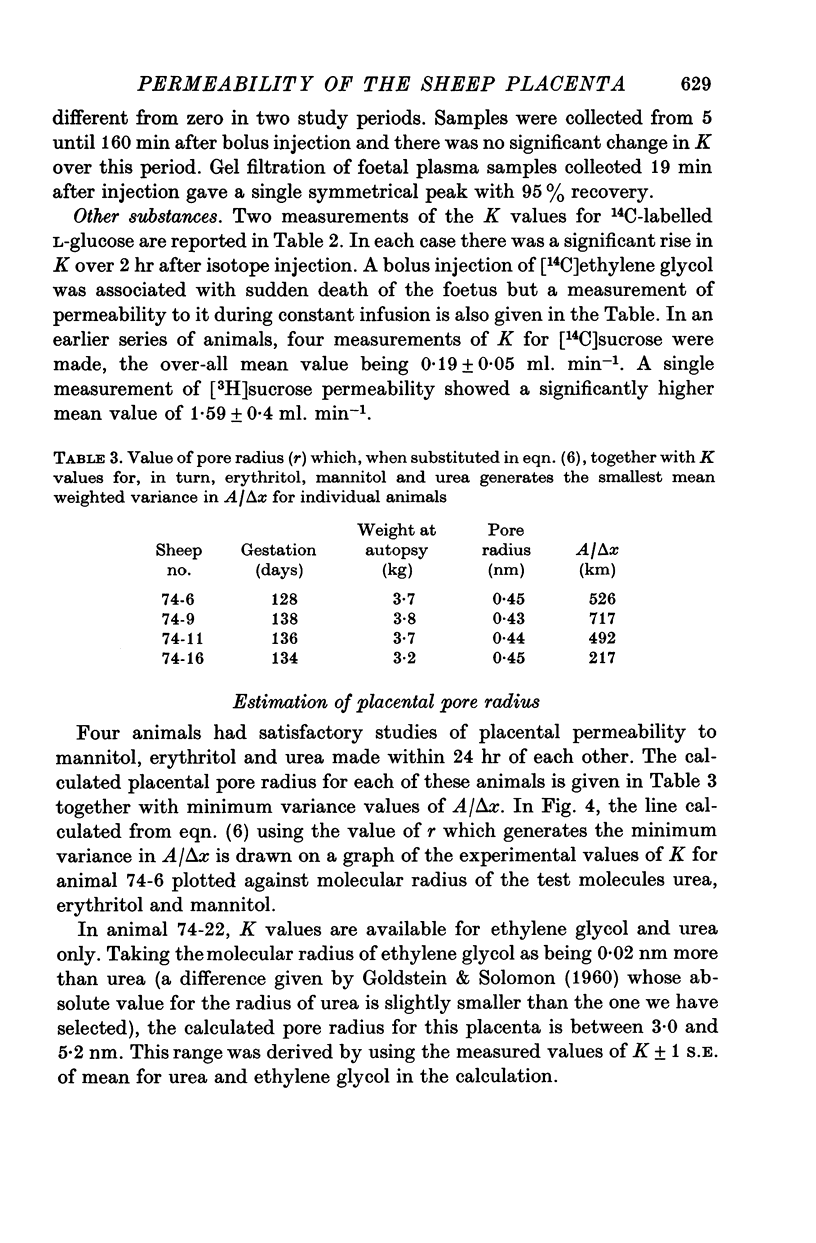
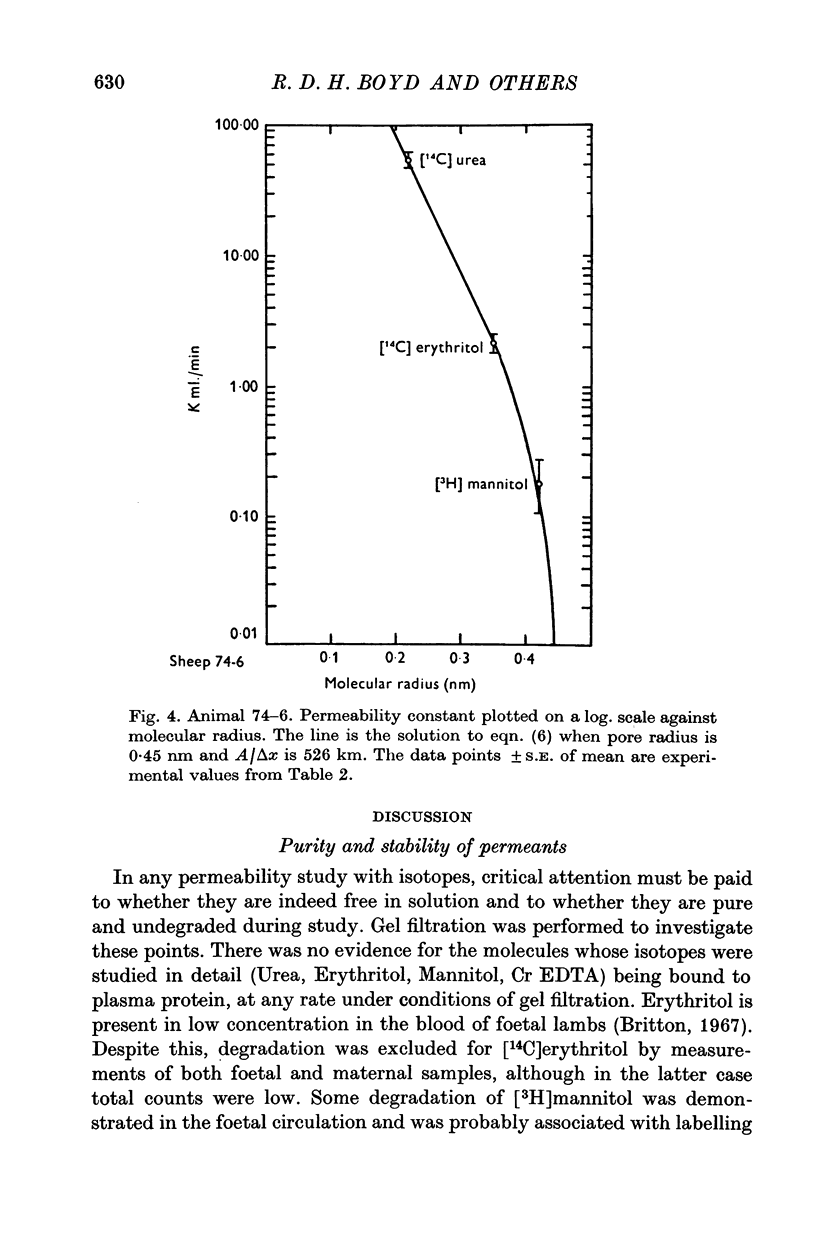
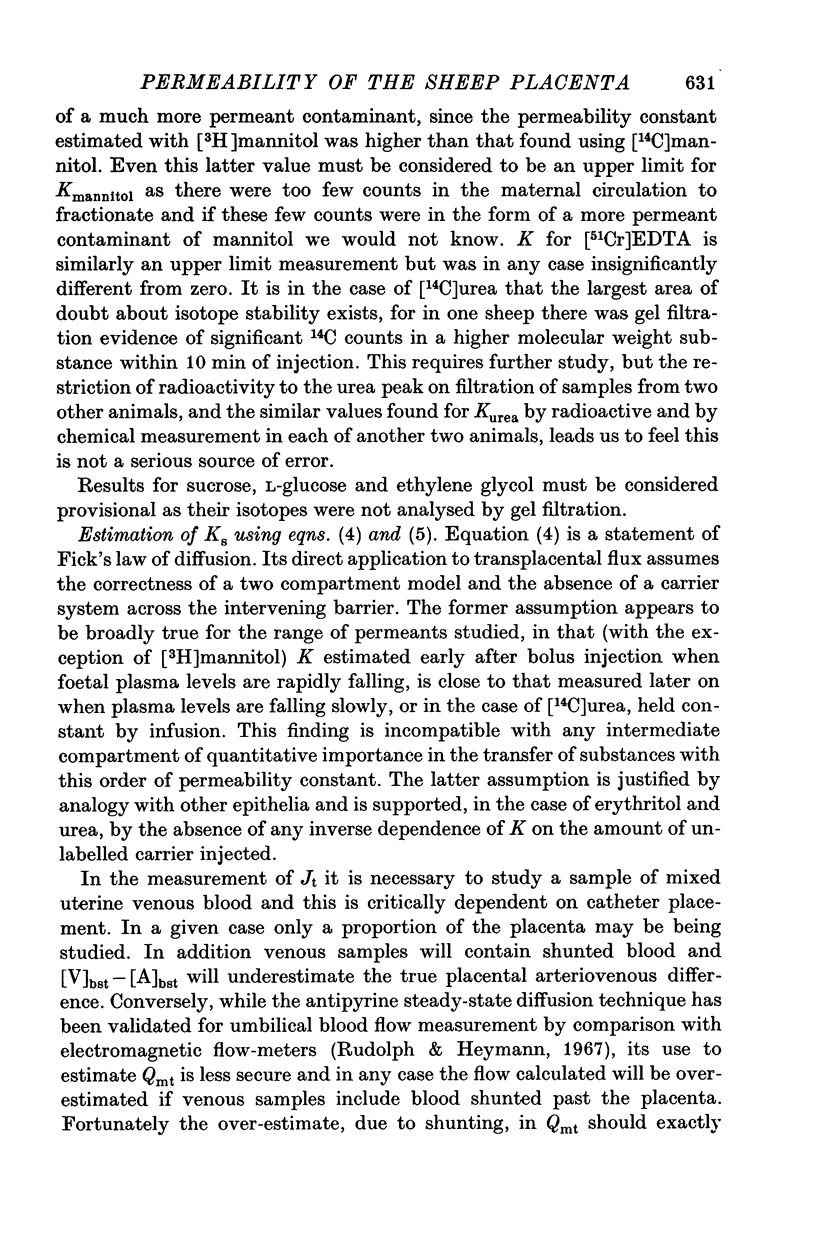
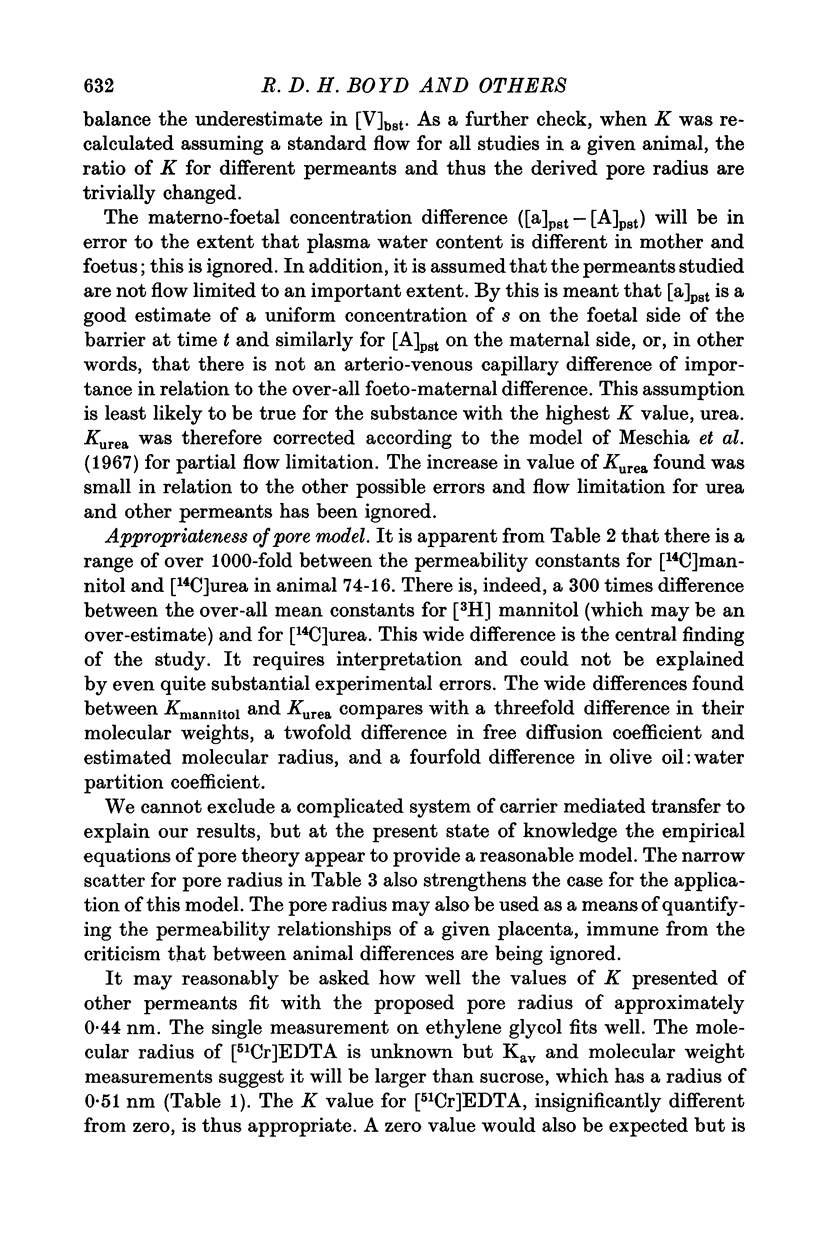
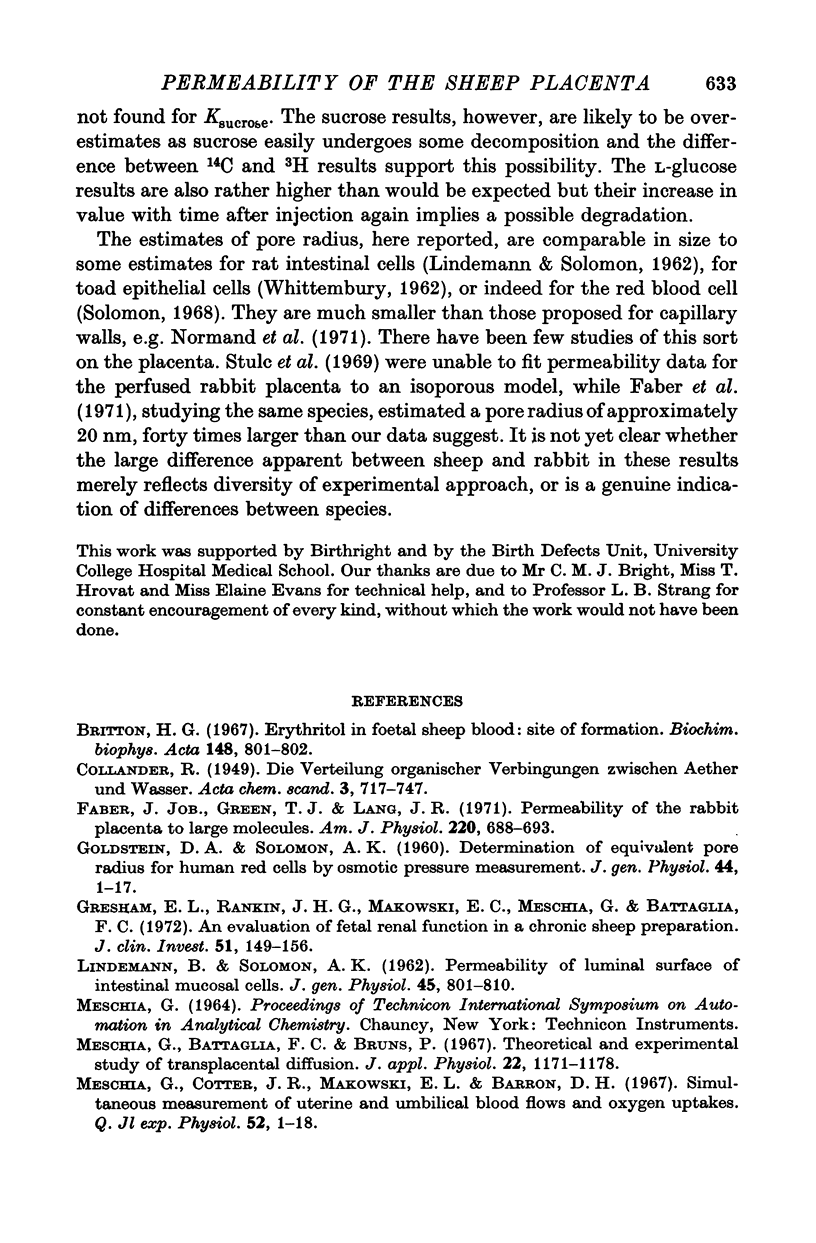
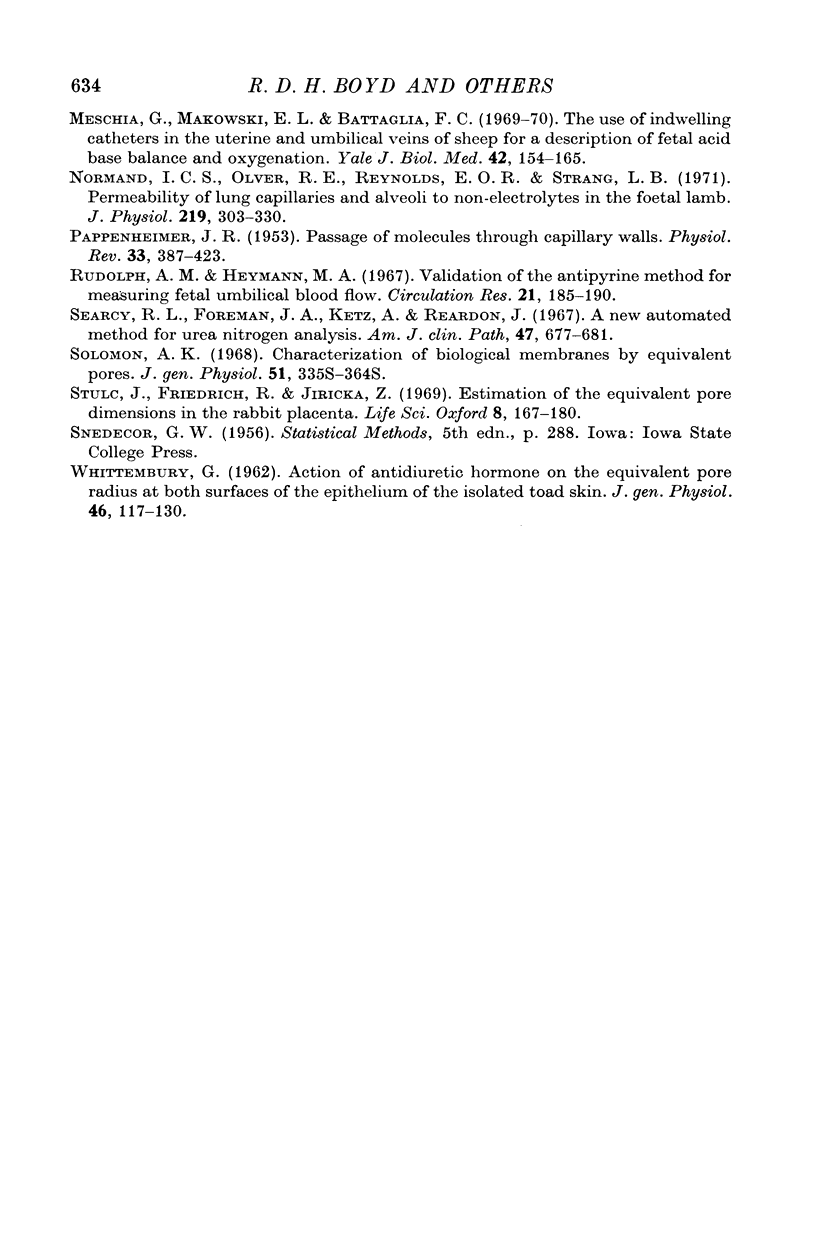
Selected References
These references are in PubMed. This may not be the complete list of references from this article.
- Faber J. J., Green T. J., Long L. R. Permeability of rabbit placenta to large molecules. Am J Physiol. 1971 Mar;220(3):688–693. doi: 10.1152/ajplegacy.1971.220.3.688. [DOI] [PubMed] [Google Scholar]
- GOLDSTEIN D. A., SOLOMON A. K. Determination of equivalent pore radius for human red cells by osmotic pressure measurement. J Gen Physiol. 1960 Sep;44:1–17. doi: 10.1085/jgp.44.1.1. [DOI] [PMC free article] [PubMed] [Google Scholar]
- Gresham E. L., Rankin J. H., Makowski E. L., Meschia G., Battaglia F. C. An evaluation of fetal renal function in a chronic sheep preparation. J Clin Invest. 1972 Jan;51(1):149–156. doi: 10.1172/JCI106785. [DOI] [PMC free article] [PubMed] [Google Scholar]
- LINDEMANN B., SOLOMON A. K. Permeability of luminal surface of intestinal mucosal cells. J Gen Physiol. 1962 Mar;45:801–810. doi: 10.1085/jgp.45.4.801. [DOI] [PMC free article] [PubMed] [Google Scholar]
- Meschia G., Battaglia F. C., Bruns P. D. Theoretical and experimental study of transplacental diffusion. J Appl Physiol. 1967 Jun;22(6):1171–1178. doi: 10.1152/jappl.1967.22.6.1171. [DOI] [PubMed] [Google Scholar]
- Meschia G., Makowski E. L., Battaglia F. C. The use of indwelling catheters in the uterine and umbilical veins of sheep for a description of fetal acid-base balance and oxygenation. Yale J Biol Med. 1969 Dec;42(3-4):154–165. [PMC free article] [PubMed] [Google Scholar]
- Normand I. C., Olver R. E., Reynolds E. O., Strang L. B. Permeability of lung capillaries and alveoli to non-electrolytes in the foetal lamb. J Physiol. 1971 Dec;219(2):303–330. doi: 10.1113/jphysiol.1971.sp009663. [DOI] [PMC free article] [PubMed] [Google Scholar]
- PAPPENHEIMER J. R. Passage of molecules through capillary wals. Physiol Rev. 1953 Jul;33(3):387–423. doi: 10.1152/physrev.1953.33.3.387. [DOI] [PubMed] [Google Scholar]
- Rudolph A. M., Heymann M. A. Validation of the antipyrine method for measuring fetal umbilical blood flow. Circ Res. 1967 Aug;21(2):185–190. doi: 10.1161/01.res.21.2.185. [DOI] [PubMed] [Google Scholar]
- Solomon A. K. Characterization of biological membranes by equivalent pores. J Gen Physiol. 1968 May;51(5 Suppl):335S+–335S+. [PubMed] [Google Scholar]
- Stulc J., Friedrich R., Jiricka Z. Estimation of the equivalent pore dimensions in the rabbit placenta. Life Sci. 1969 Feb 1;8(3):167–180. doi: 10.1016/0024-3205(69)90091-5. [DOI] [PubMed] [Google Scholar]
- WHITTEMBURY G. Action of antidiuretic hormone on the equivalent pore radius at both surfaces of the epithelium of the isolated toad skin. J Gen Physiol. 1962 Sep;46:117–130. doi: 10.1085/jgp.46.1.117. [DOI] [PMC free article] [PubMed] [Google Scholar]


